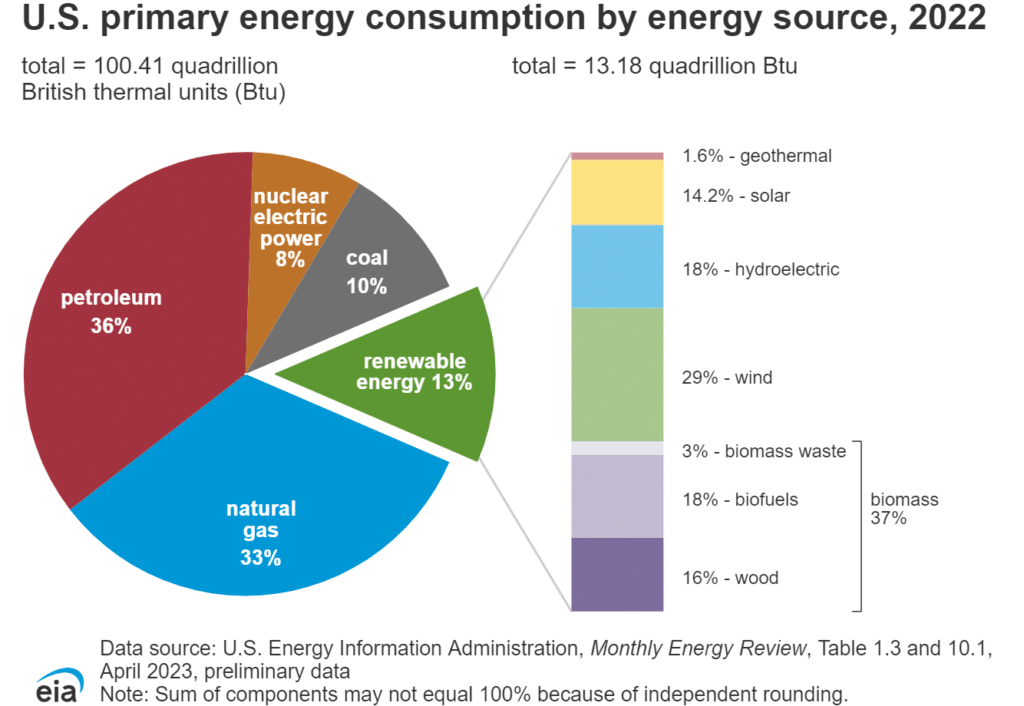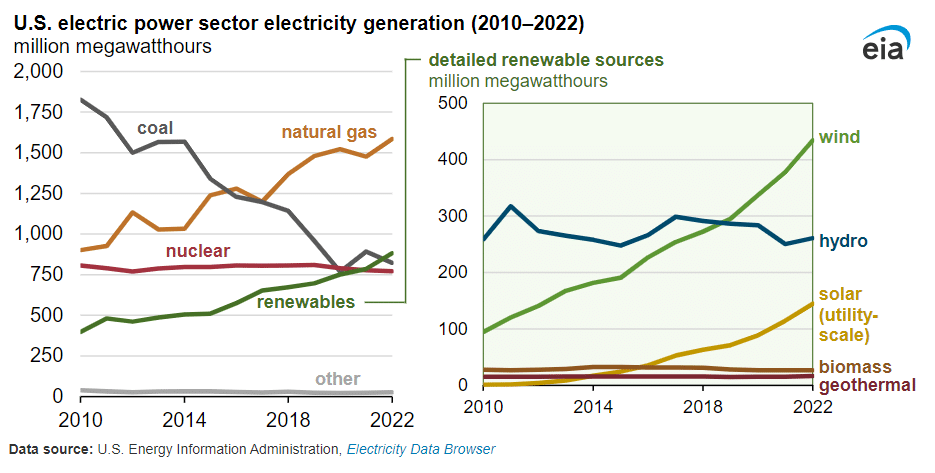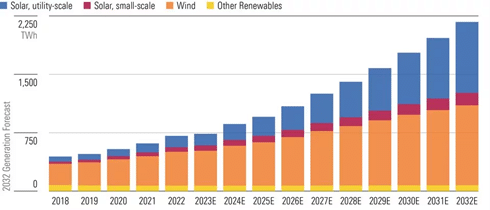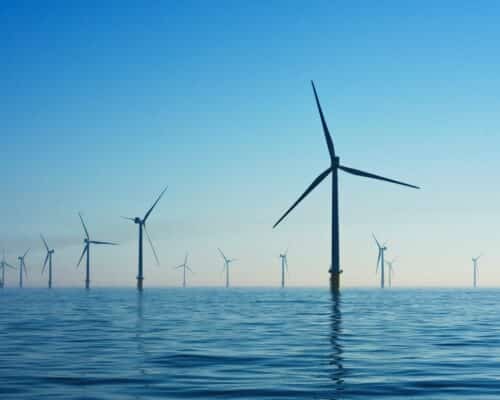Top Renewable Energy Companies in the USA Leading the Green Revolution
29 January 2024 – by Eric Koons
Top Renewable energy companies in the USA are experiencing significant growth, fundamentally reshaping the nation’s energy landscape. As of 2022, renewable energy sources accounted for 21.3% of the country’s electricity generation and 13% of its overall energy consumption. This led to several important milestones in the country’s push to hit net-zero emissions by 2050. Renewable energy generation surpassed nuclear for the first time in 2021 and coal in 2022.
This growth in renewable energy production is primarily the result of government policies, declining technology costs and the public demand for renewable energy solutions and energy efficiency. As a result, it is creating a strong renewable energy sector that includes some of the largest renewable energy companies in the world. This has allowed companies to expand across the US and develop a variety of renewable energy technologies.
What Is the Most-used Renewable Energy Source in the US?
The United States most used renewable energy source is wind energy. It accounts for over 3.5% of the US’ primary energy consumption and 10.3% of its domestically produced electricity. It has seen a capacity increase of over 400% since 2010.

This is primarily from the central plains region of the country, which has large areas of undeveloped land and optimal windspeeds. Texas, Oklahoma, Iowa, Kansas and Illinois produced 57% of the country’s wind power in 2022. However, there is a push to increase offshore wind farms and wind turbines, which hold significant potential.

While wind energy is the leading renewable energy source in the US, hydropower and solar power are also present. Hydropower has played a consistent role in the country’s energy supply for decades, yet it has not experienced much growth in recent years. Alternatively, solar energy has had an average annual growth rate of 24% throughout the last decade. As of 2022, half of US states had installed at least 1 GW of solar capacity.
What is the Future of Renewable Energy in the USA?
Looking ahead, the future of renewable energy in the US appears promising. Projections show that clean energy will grow by 12% annually over the next decade. This will triple the country’s renewable energy capacity, accounting for 45% of the US’ total power generation by 2032.
With no policy changes, 45-65% of the country’s electricity will come from wind and solar power projects by 2035.

This is largely the result of ongoing technological improvements and declining deployment costs. However, robust government policies, like the recent Inflation Reduction Act, will increase deployment by reducing initial development costs.
However, while this deployment rate is significant, it will still fall below what the US needs to reach its emissions reduction goals for 2025 and 2030. These are critical stepping stones for the end target of net-zero by 2050. To reach this goal, further policies and incentives are necessary over the next two decades.
Biggest Renewable Energy Companies in the US
The rapid expansion of renewable energy in the US is driving significant corporate growth. Several leading companies have spearheaded this green energy revolution, each carving out their niche in the industry.
It is challenging to give a definitive list of the largest renewable energy companies in the USA due to many being multinational or involved in a mix of fossil fuels and renewables. However, a few of the leaders that generate a majority of their energy from renewable sources include the following.
NextEra Energy
By some accounts, NextEra Energy is the world’s largest utility company and largest generator of wind and solar energy. It is based in Florida but has renewable energy projects across the country.
The company tripled its wind energy capacity over the last decade and has over 67 GW of renewable and low-carbon energy capacity online in the US. NextEra Energy positions itself as a critical part of the US’ push to decarbonise its economy and is planning to be net-zero in its internal operations by 2045.
Brookfield Renewable Energy Corporation
Brookfield Renewable Energy Corporation is headquartered in Canada and operates in over 30 countries. With that being said, it is still one of the largest renewable energy companies in the US. It is currently a part of over 8,000 low-carbon energy generation facilities and has an energy capacity of 31 GW. Its primary focus is hydropower, solar and wind energy.
Xcel Energy
Unlike the previous two companies, Xcel Energy produces a portion of its energy with fossil fuels. As of 2022, however, 53% of the company’s energy generation was from renewables – primarily wind. The company has over 11 GW of renewable energy capacity, and over 60% of its energy will come from renewables by 2030. The company will phase out all fossil fuels by 2050.
Clearwater Energy
Clearwater Energy is the smallest company listed so far, yet it still operates wind and solar renewable power generating facilities producing 9.3 GW of energy. This energy company produces 100% renewable energy and operates in 34 states. Additionally, Clearwater Energy has ambitious targets and is aiming to increase its renewable energy generation capacity to 100 GW by 2030.
The US’ Role in Global Renewable Energy Generation Growth
The trajectory of renewable energy growth in the US is set on an upward path, particularly with oil declining as a viable investment option. Government policies will be pivotal in supporting this transition, providing a conducive environment for renewable energy companies to flourish. This supports the symbiotic relationship between public policies and private sector innovation in driving renewable energy growth.
As the world gravitates towards sustainable energy solutions, the US plays a pivotal role in this journey. It is the world’s second-largest greenhouse gas emitter and can be a role model for other nations. A failure to meet its 2030 and 2050 renewable energy targets would dampen expectations towards emissions reduction goals across the world.
by Eric Koons
Eric is a passionate environmental advocate that believes renewable energy is a key piece in meeting the world’s growing energy demands. He received an environmental science degree from the University of California and has worked to promote environmentally and socially sustainable practices since. Eric’s expertise extends across the environmental field, yet he maintains a strong focus on renewable energy. His work has been featured by leading environmental organizations, such as World Resources Institute and Hitachi ABB Power Grids.
Read more


